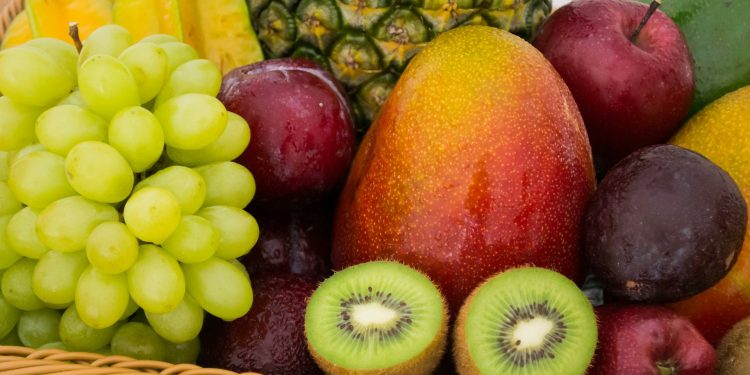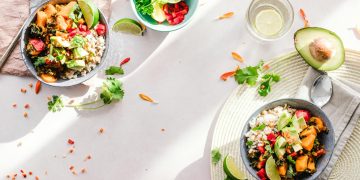Man-made fruits, a testament to human innovation in agriculture, have transformed our culinary landscape. These fruits are not merely products of nature but have been carefully cultivated and selectively bred to meet specific needs. Their importance in addressing agricultural challenges and enhancing food diversity cannot be overstated. Here, let’s explore the intriguing world of man-made fruits, focusing on the top 15 varieties that have left an indelible mark on our tables.
Top 15 Man-Made Fruits
1. Apple (Granny Smith)
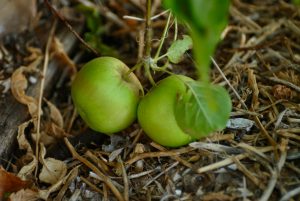
Description: The Granny Smith apple, originating in Australia in the late 1860s, is renowned for its crisp texture, tartness, and vibrant green color. Named after Maria Ann Smith, this cultivar has become a global favorite for its versatility in culinary applications.
History: Maria Ann Smith discovered the original seedling on her property in Sydney, and the apple gained popularity for its unique flavor and resilience. Today, the Granny Smith apple is a staple in pies, salads, and snacks.
2. Banana (Cavendish)
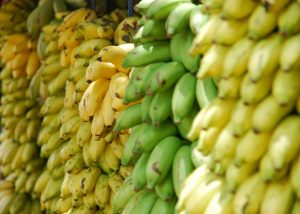
Description: The Cavendish banana, a descendant of the Gros Michel variety, emerged in the 1950s as a resilient replacement after the devastating Panama disease wiped out its predecessor. This banana is characterized by its elongated shape, creamy texture, and mild sweetness.
History: Named after Sir Henry Cavendish, this banana variety showcases the impact of human intervention in preserving and evolving our favorite fruits. It has become a global staple, enjoyed in its natural form or incorporated into various dishes.
Also Read: How To Tell if an Orange Is Bad?
3. Seedless Watermelon
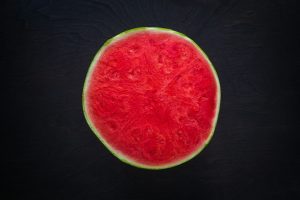
Description: The seedless watermelon is a marvel of agricultural innovation, offering sweet, juicy flesh without the inconvenience of seeds. This variety has become a summertime favorite, eliminating the need for seed spitting and enhancing the overall eating experience.
History: Developed through careful cross-breeding, the seedless watermelon has become a symbol of successful genetic manipulation, addressing a common consumer preference for seedless fruits.
4. Grape (Thompson Seedless)
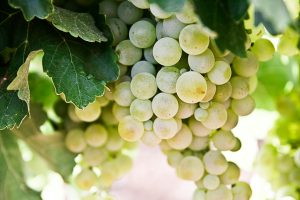
Description: The Thompson Seedless grape, with its sweet and versatile nature, was developed in the 19th century. Originating from the Ottoman Empire, it became a Californian success story, making its mark in the raisin industry.
History: This seedless grape underscores the impact of selective breeding in shaping the fruit industry. Today, the Thompson Seedless grape is enjoyed fresh, dried, and in various processed forms.
5. Kiwifruit (Gold Kiwi)
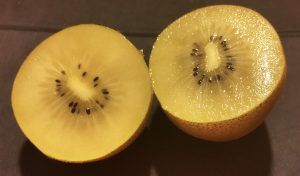
Description: The Gold Kiwi is a golden-fleshed variant of the more common green kiwifruit, known for its sweet and tropical flavor. This cultivar, developed in New Zealand, has gained popularity globally for its unique taste and nutritional benefits.
History: Through cultivation and selective breeding, the Gold Kiwi exemplifies the potential for creating unique fruit varieties that cater to evolving consumer preferences.
Also Read: Radish vs Beet: Health Benefits, Impact, and Nutrition Values
6. Tomato (Roma)
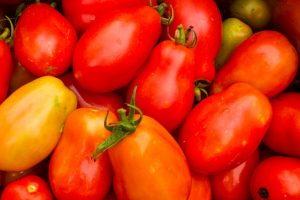
Description: The Roma tomato, known for its low moisture content and robust flavor, has become a staple in sauces and canning. With its plum-like shape and dense flesh, it is favored for its culinary versatility.
History: Originating from Italy, the Roma tomato showcases how careful cultivation can yield fruits with specific culinary applications. It has become essential in Mediterranean and international cuisines.
7. Strawberry (Albion)
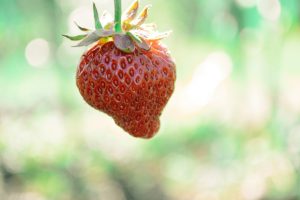
Description: The Albion strawberry, bred in California, stands out for its large size, vibrant color, and sweet taste. This variety, a result of meticulous breeding programs, highlights the importance of addressing consumer preferences through intentional cultivation.
History: Known for its improved characteristics, the Albion strawberry has become a favorite among growers and consumers alike, setting a standard for sweetness and appearance.
Also Read: Are Watermelon and Tomato Companion Plants? [Detailed Guide]
8. Blueberry (Southern Highbush)
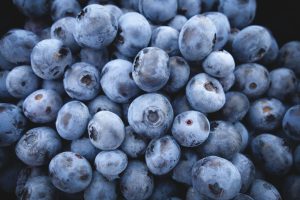
Description: The Southern Highbush blueberry, adapted for warmer climates, has become a valuable addition to the blueberry market. With a balance of sweetness and acidity, this variety showcases the adaptability of fruits through selective breeding.
History: Bred for its ability to thrive in regions with milder winters, the Southern Highbush blueberry has expanded the geographic range for blueberry cultivation, providing consumers with fresh berries in various climates.
9. Pineapple (MD-2)
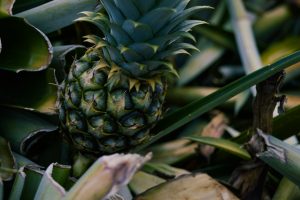
Description: The MD-2 pineapple, also known as the Gold Pineapple, emerged as a sweeter and more aromatic variant through selective breeding in the 20th century. This cultivar has become synonymous with superior flavor and texture, representing the successful evolution of a beloved tropical fruit.
History: With enhanced sweetness and reduced acidity, the MD-2 pineapple has become a favorite among pineapple enthusiasts, both as a standalone fruit and in various culinary applications.
10. Peach (Honey May)
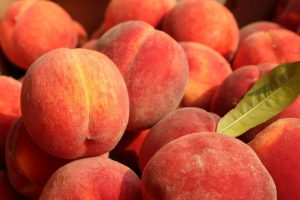
Description: The Honey May peach, developed for its exceptional sweetness and juiciness, exemplifies the potential of selective breeding in enhancing the sensory qualities of fruits. This variety has become a favorite among peach enthusiasts for its delectable taste and pleasing texture.
History: Through intentional breeding, the Honey May peach showcases how the fusion of desirable traits can result in a peach variety that stands out for its flavor and texture.
Also Read: Plant Food vs. Fertilizer: 8 Key Differences Explained
11. Cherry (Rainier)
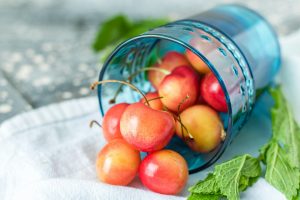
Description: The Rainier cherry, a golden-hued fruit with a distinctive sweet flavor, was developed in Washington state. Named after the iconic Mount Rainier, this cherry variety showcases the possibilities of selective breeding in producing visually appealing and delicious fruits.
History: The Rainier cherry, with its unique appearance and flavor, has become a premium cherry variety, highly sought after in fresh markets and enjoyed as a delightful snack.
12. Plum (Santa Rosa)
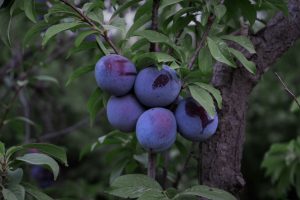
Description: The Santa Rosa plum, a hybrid of Japanese and American plum varieties, was developed in California. Known for its sweet-tart flavor and vibrant color, this plum demonstrates how intentional breeding can lead to the creation of fruits with a unique and desirable profile.
History: A result of cross-breeding efforts, the Santa Rosa plum has become a versatile fruit used in jams, desserts, and fresh consumption, highlighting the potential for combining the best traits from different plum varieties.
Also Read: Plum vs Pluot: Key Differences Unveiled!
13. Papaya (Sunrise)
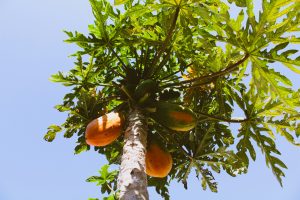
Description: The Sunrise papaya, genetically modified to resist the destructive papaya ringspot virus, has helped revive the papaya industry. This example of biotechnological intervention highlights the potential of genetic engineering in addressing threats to fruit crops and ensuring food security.
History: The Sunrise papaya showcases the intersection of genetic engineering and agriculture, providing a sustainable solution to a devastating virus that once threatened the papaya industry.
14. Blackberry (Chester Thornless)
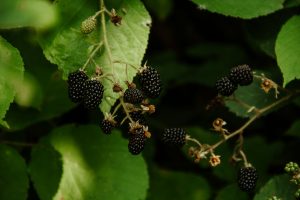
Description: The Chester Thornless blackberry, a thornless variant of the traditional blackberry, offers ease of harvest without sacrificing flavor. Bred for its convenience and delectable taste, this blackberry variety exemplifies the balance between practicality and quality in fruit cultivation.
History: The Chester Thornless blackberry has become a favorite among growers and consumers for its ease of cultivation and delightful flavor, demonstrating the potential for creating user-friendly fruit varieties.
Also Read: Bell Peppers Growing Stages: From Seed to Harvest
15. Pear (Bartlett)
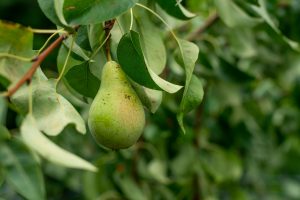
Description: The Bartlett pear, with its buttery texture and sweet flavor, has a history dating back to the 18th century in England. Through careful cultivation and global popularity, it has become one of the most recognized and widely consumed pear varieties, emphasizing the enduring impact of man-made fruits.
History: The Bartlett pear, also known as the Williams pear, has a rich history and has become a staple in both fresh consumption and culinary applications, showcasing the enduring appeal of carefully cultivated pear varieties.
Conclusion
The world of man-made fruits is a captivating journey through intentional breeding, genetic engineering, and agricultural innovation. Each of these top 15 fruits represents a unique chapter in the evolution of our food supply. As we continue to explore and refine our methods of cultivation, the future promises even more astonishing man-made fruits that will further shape our culinary experiences. The journey of these fruits is a testament to our ability to mold nature to suit our needs and desires, ensuring a diverse and flavorful future for global agriculture.


